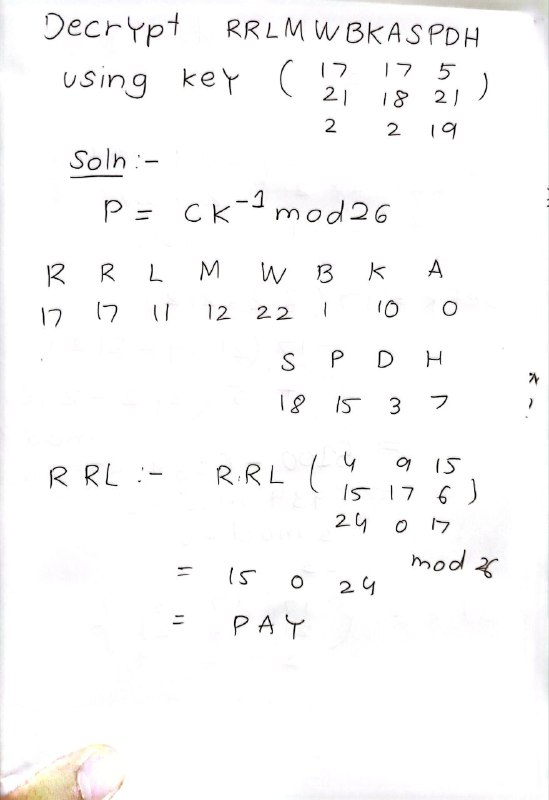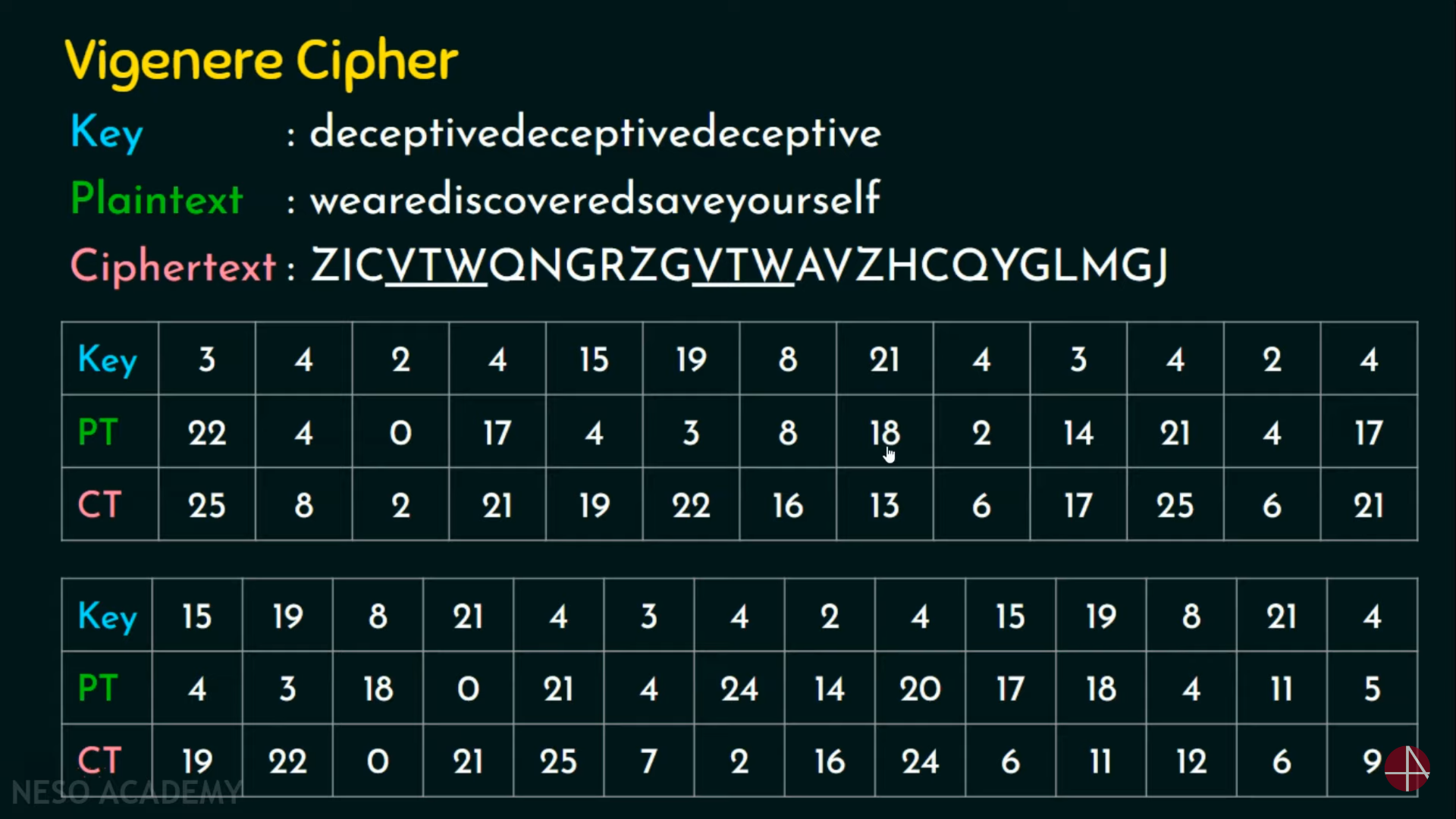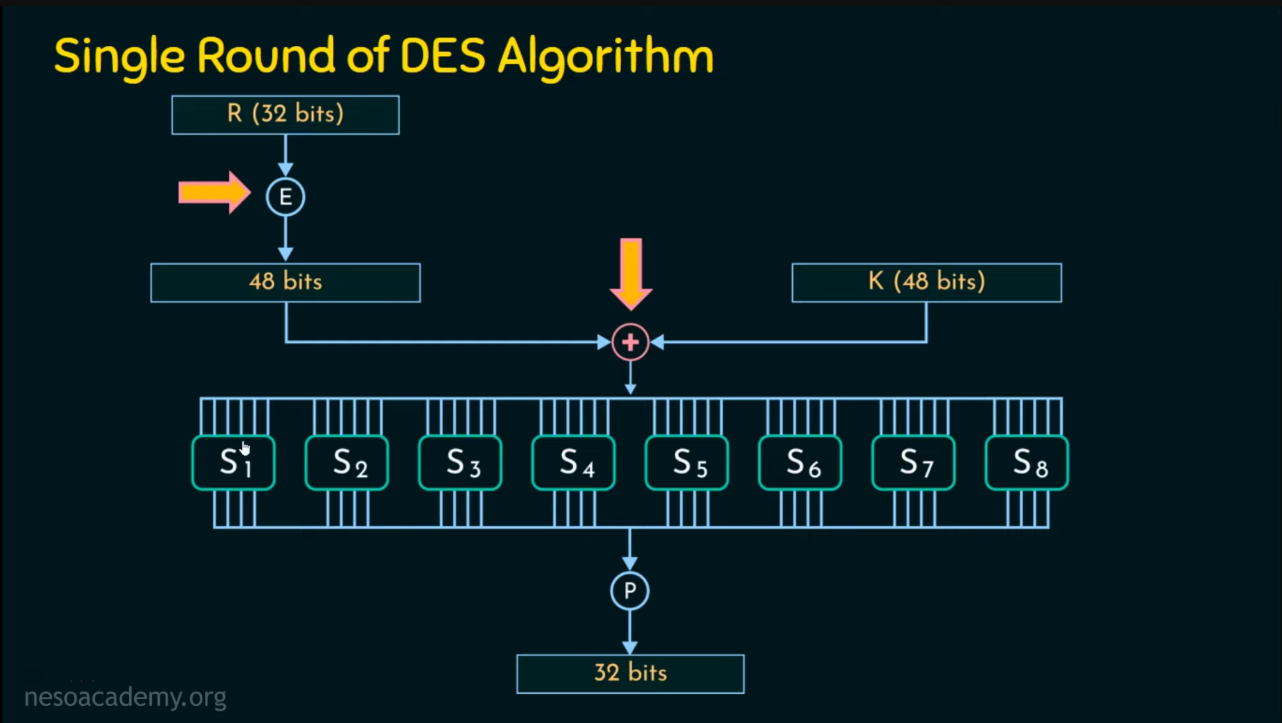What is Symmetric Encryption?
It’s the form of encryption in which the same key is used on for both encryption and decryption.
Classical Encryption Techniques
Substitution Ciphers
Caesar’s Cipher
Just shift each alphabet by a set number. Wraps around. Very easy to brute-force as there are only 25 keys to check for readable text.
Monoalphabetic Cipher
- Requires attempts to brute-force it.
- Randomly map every single letter in the plaintext to any English alphabet.
- We can easily break it with the knowledge of relative frequency of English alphabets. If in our cipher we see that is the most common, we cross-reference this with the fact that is the most common letter. We start with that substitution
Playfair Cipher
It’s a manual symmetric encryption technique. It’s the first literal diagram substitution cipher. It’s a multiple-letter encryption cipher.
We begin by constructing a matrix using a keyword. Given below is an example matrix construction.

Rules for Playfair Encryption
Post creation of the matrix, do the following:
- Create the diagrams. Start making pairs of 2.
- If there are any repeating letters, replace them with a filler letter and move the second repeat to the next pair.
- If it’s a rectangle → swap.
- If it’s the same row → wrap around horizontally.
- If it’s the same column → wrap around vertically.
EXAMPLE: Consider the word mosque. We split it into pairs ‘mo’, ‘sq’ and ‘ue’.
- mo is the same row, so m is swapped with o and o is swapped with n. It becomes on.
- sq → ts
- ue → ml (vertical wraparound, top to bottom). Thus mosque is encoded into ontsml.
Hill Cipher
Hill Cipher - Encryption
In> [!handwritten]- Hill Cipher - calculation
Hill Cipher - Decryption
Polyalphabetic Cipher
This was invented to improve on the simle monoalphabetic technique. Common Features:
- A set of related monoalphabetic substitution rules is used.
- A key determines which particular rule is chosen for a given transformation.
Vigenere Cipher
Vigenere Cipher
Autokey System: The periodic nature of the keyword can be eliminated by using a non-repeating keyword that is as long as the message itself. This was proposed by Vigenere himself, in which a keyword is concatenated with the plaintext itself to provide a running key.
Vernam Cipher
- Convert alphabet to numeric, and then to binary.
- Perform XOR operation on the binary message alphabet and key alphabet, convert results back to alphabets.
Transposition Ciphers
Rail Fence Cipher
It takes a ‘depth’ value for the ‘fence’ and then reads each level horizontally to give the ciphertext.
Remember the ‘neso academy’ example that you wrote down.
Row-Transposition Cipher
Start filling the matrix normally and add any filler characters if necessary. Then, you will be provided with a key that gives the order in which we read the columns. We then read each column vertically, top to down and concatenate to provide ciphertext.
DES Algorithm
Structure of DES Encryption Rounds
Single Round of DES Algorithm
Structure of a Single Round






